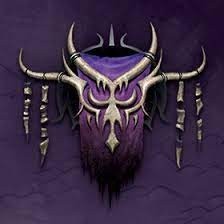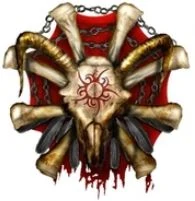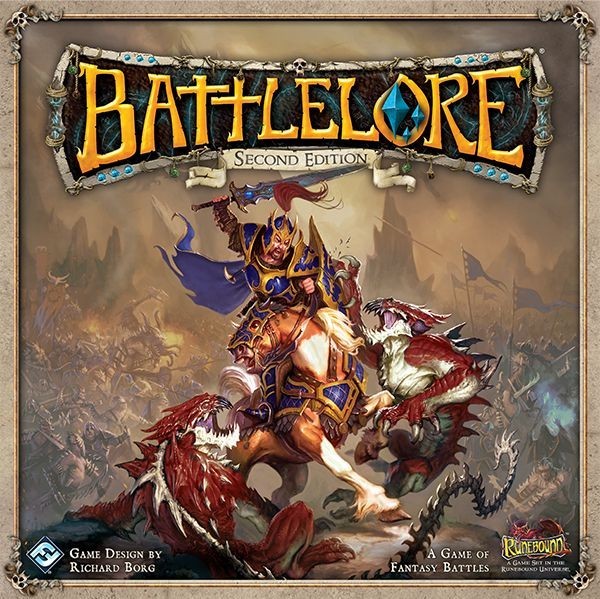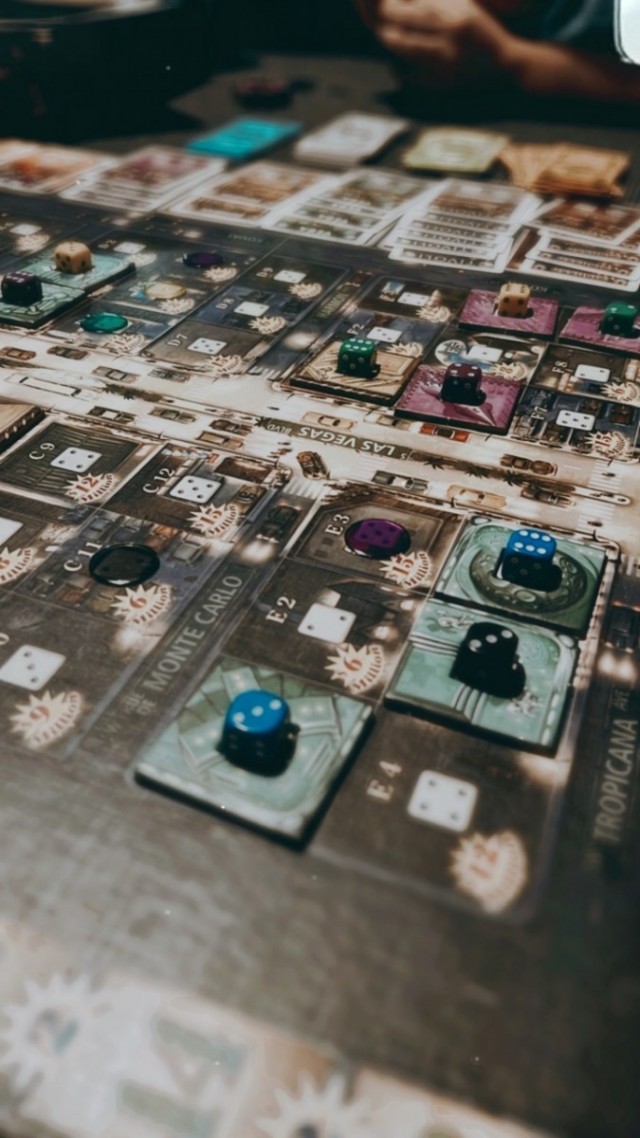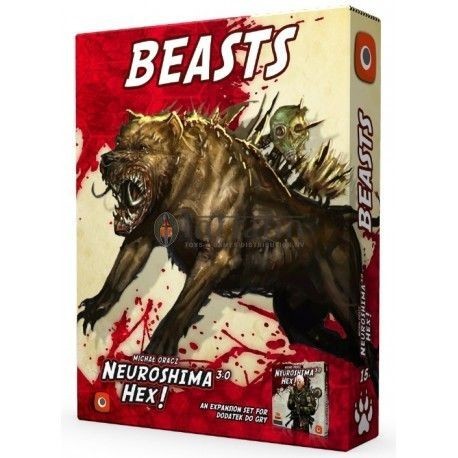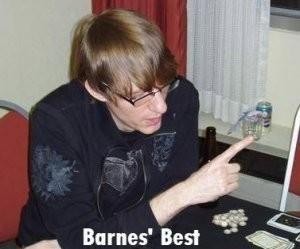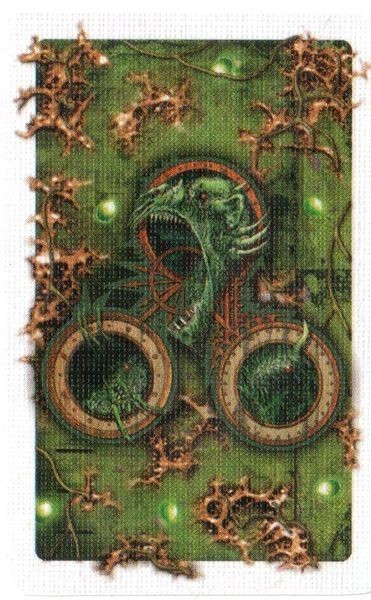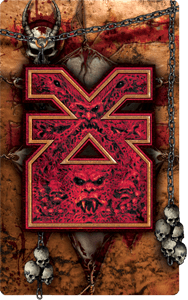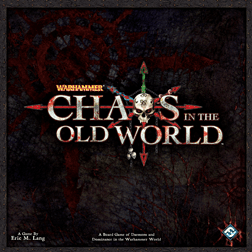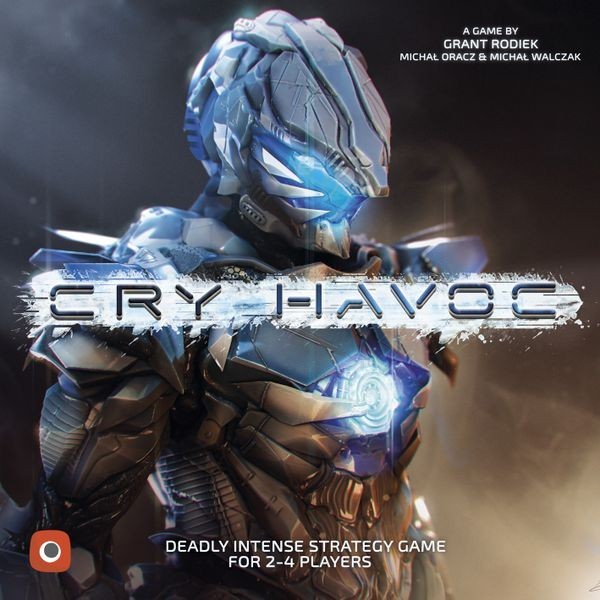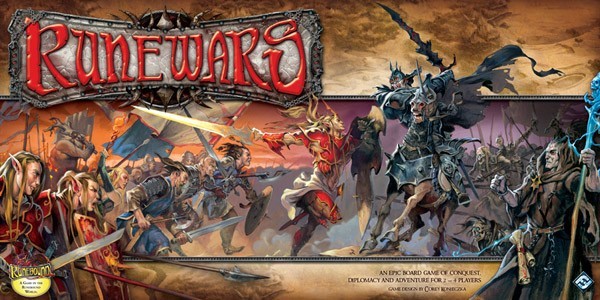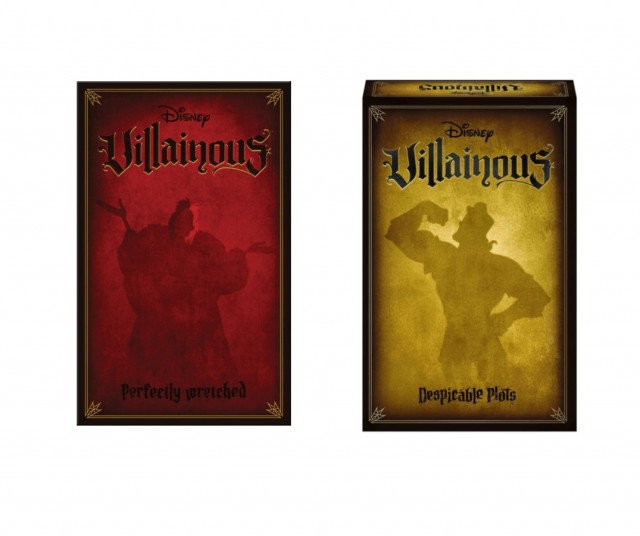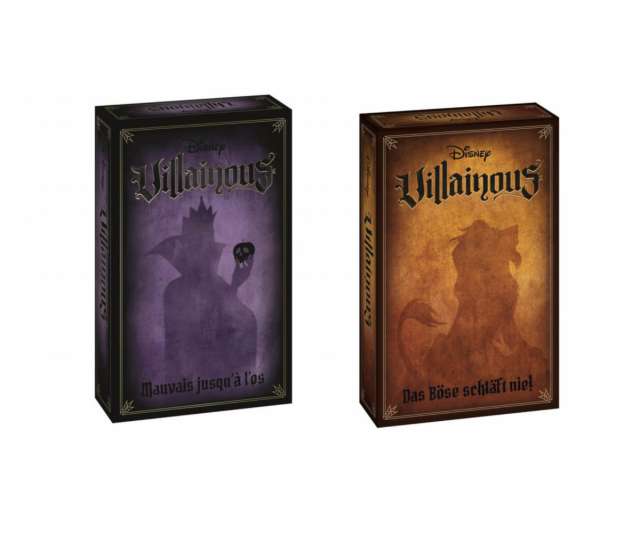The four large expansions for Runebound not only transform the game, but reinforce its lasting appeal.
One of the restraining factors on many board games that separates them from role-playing games is that, in the former, to one degree or another, it's going to be the same thing. If you sit down to play a game of Space Hulk, even if it's a scenario that you've never tried before, it's still going to be Space Hulk and one player is going to be the Space Marines and the other player is going to be the Genestealers and they're going to be fighting on an abandoned spaceship. What makes most games successful is that their play is good enough that returning to the same thing, over and over, is still enjoyable. That's normally known in our world as "replayability". As noted, with hundreds of Adventure and Market cards distributed among 41 heroes and with a half-dozen small to significant alterations of the background story, Runebound, already mechanically sound, has a ton of replayability. But, like many adventure games, the developers sought to give it even more by taking the focus away from "standard, mid-European, temperate zone" and moving it to an archipelago, a desert, an arctic zone, and the tropics, along with an appropriate shift in items, adversaries, and background cultural facades. This is what the four large expansions are about. It's still Runebound, but it's a whole new world.

The Island of Dread: The first of the large expansions, Island was released concurrently with the 2nd Edition update to the game. Thus, it had base game designer, Martin Wallace, involved. The map is a collection of sizable islands that usually require water travel to reach. That requires Captains, who are pseudo-allies that can get you around the treacherous waters of the Cerridor Sea. Each captain has a set of stats (as they can fight for you like allies), a special ability, and a cost to hire them. The Captains are the only way to move across the sea, so you'll have to deal with them at some point and engage the adventures that are present on the waves. Those are blue Adventures, which is likely why the stats for many of the Captains are pretty good, as you might need their help to survive the trip. In fact, they're the only way to get to the namesake of the expansion (the Island of Dread), which is where you win the game by defeating the mad god, Assif Shib-Sa. Yes, the winning condition isn't that different from the base game, but the way in which you get there has some really interesting changes.
For one, given that a good chunk of the map is water terrain that's either impassable or only passable with a Captain that you pay gold to hire, there are more Adventure jewels on this map than there are on the main board. Also, since the map is made up of smaller pieces of land, those Adventure tokens are often much closer together, which means you're even less reliant on the movement dice to get you where you need to go, as you can often just waive rolling and move one space and get where you want. Howevah, with the jewels being so close, they're usually cleared much faster, so it will often be required to pick up a Captain just to sail to another island/city, even if you're not ready to deal with blue Challenges. But everyone starts in the city of Dallak on the largest landmass, Torue Albes, which has two other cities on it (Garnoff and Trelton) and is exclusively populated by greens and yellows, so it is possible to get started without hitting the open sea. The green and yellow Event cards can also have earthshaking effects, raising land bridges in some sea lanes that make it possible to walk to the smaller islands (Dry Land) and the one city (Tarianor) that can usually only be reached by sea, or sinking three cities beneath the waves (The Earth Shakes, The Earth Sinks) along with their Captains and Market stacks. In between those, one yellow Event actually makes sea travel safer by replacing adventure spaces with open water (Fair Winds.)

Another change is the inclusion of Map counters. You gain these from Challenges and occasional Encounters and they can be discarded to obtain legendary items that mostly help in the final fight against Assif Shib-Sa, but occasionally have other purposes. Map counters are also the only way to actually get to the Island of Dread to have that ultimate showdown. As noted in part I, there's also a questing system, usually rooted in Encounter cards, that calls for players to travel to certain areas on the map to complete their tasks. They're then kept as "completed Quests", which are a very limited type of currency that can help with later Events and occasionally Challenges. It's always felt like there may have been more space to develop this aspect of the expansion, but they weren't quite ready to flesh it out. I think it becomes much more prominent in Sands of Al-Kalim.
That final fight is a one-way street. You start drawing from the silver deck and keep fighting, getting Refresh steps in between each card, until you're either knocked out or face the mad god and defeat him, winning the game. So, in that respect, it's not tremendously different from the base game, except that you know there's only one place to go to find the final boss. You just have to find enough map counters to get there and be able to endure what may be a string of up to seven opponents to make it happen, but which could be as easy as one. Everything else from the base game remains the same in terms of item purchasing and PvP, although the latter is slightly enhanced, since being knocked out while on the water allows someone else to choose which city you wash up at, rather than simply getting dragged to the nearest one. We played several sessions of the base game before moving on to the Island, but it was an excellent change of pace which only accelerated with the next big release.

Sands of Al-Kalim: This is the expansion where the quest/story aspect really took off. In fact, that's basically the win condition. If you're the first to fulfill four Legendary quests, you're the victor. Each Legendary quest (of five types: Allies, Artifacts, Mounts, Runes, Knowledge) grants you a significant reward, as well as being a step closer to victory. The quests can vary pretty widely, such as The Call of the Lamp, which requires you to explore the bazaar in the Traders' Fort and then test Hide (11) at the end of every turn as you make your way to the bazaar in the Court of Wisdom. If you fail any of the tests, you fail the quest and must discard it. If you complete it, you gain the Djinni's Lamp, which lets you have three wishes (act like any other player's Legendary card this turn.) Or there's Befriended a Beast Tamer, which requires you to resolve your next three Challenges (win, lose, or escape) in three different terrain types. For that you gain the Tamer of Beasts ally (Legendary allies don't count against your normal limit of two.) Or Crafted a Rune of Summoning, which requires you to find one of the Lost Cities in a Barrens space. Said Rune lets you summon one of the Lost Cities three times, wherever you are. (Let it be known that I question their use of the pluperfect for most of the quest titles. Wouldn't "Craft a Rune of Summoning" make more sense?)
As you may have surmised, terrain is an important factor in Sands and is one reason why both the goal of the game isn't simply gearing up to max out against a big boss and why there are fewer encounter jewels on the board. The pace of the game is a little slower because you're telling a story and the land is part of that story. Each terrain type in the base game has a matching type on this board (Rivers are Lowlands; Mountains are Canyons; etc.) But the terrain can also be challenging (this is a desert) and the day/night rules are the other reason for that pace. Generally, in terms of Challenges, you want to move around during the day. Challenges will often be impacted by the heat as much as you are and will usually have lower health totals and/or be otherwise impaired. But you're also impacted by the heat. Moving around during the day gives you Exhaustion counters. Moving from certain terrain (Dunes; Plains in the base game) makes it worse. Rolling a Mirage (Forest) on the movement dice makes it even worse. Running around during the day could easily set you up to take wounds just from Exhaustion. Running around at night means you're facing stronger opposition, since they'll be as rested as you are. Pick your poison. Sometimes it's better just to move one space or rest for the day. Plus, there are often only five cities available to access for Market steps. You'll have to wait for the others (the Lost Cities mentioned above) to appear during a Story step.

That's yet another key to the different pace of play in Sands. If you're not in a space with an Adventure token, you can still take a Story step. If you're in a town, that means taking a Market step. If you're out in the world, then you can do one of two things: draw another Legendary quest to help set your path for next turn or roll the Story die, which is a terrain die with effects based on all of the symbols that come up. Sometimes you're just tending to map stuff (moving the sandstorm, replacing Adventure tokens), but sometimes you're discovering an old well (discard Exhaustion) or gold that someone thought they buried sufficiently (gain 1 coin.) And, if it's night, you could get ambushed by the next Adventure card. You pays your money and you takes your chances... One thing that helps the rougher travel is that Sands is the first large expansion that introduced Survival Gear; a trend which continued into Frozen Wastes and Mists of Zanaga. Among the stuff you can pick up in those rarer cities are Pack Camels, Water Skins, and Adventuring Kits (This is like back in old school D&D when people would be carrying rope, flint and steel, and a 10' pole ("It's time for your light spell, cleric! Cast it on your 10' pole!")) Those items help you resist the harsh conditions and get to where you need to be with less taken out of you. Continuing in that vein of being drenched in theme, Sands has its own Ally cards, so you don't use the regular ones from the base game unless you somehow run out of the ones in Sands. All of them are theme-appropriate for the setting (A Desert Guide, A Camel Driver, A Lightblind Archer, A Minor Djinni, etc.) They're all equivalent to allies of similar cost in the base game, so there's no letdown. You just have to be aware that you won't be digging through the Ally deck for Cardinal Koth in this game.
Another interesting thing that Sands added is the concept of Challenge traits. There are generally only five types of opponents in the deserts: Abominations, hybrids, sorcerers, bandits, and (sigh) crusaders of Kellos. Hybrids aren't just the dragon dudes from the base game, but fusions of humans with a number of creatures. Sorcerers tend toward the undead. But the traits are important because certain Challenge rewards cite them as part of their bonuses. The Leonine Predator, for example, is a hybrid who (if you defeat it) can be discarded to inflict two wounds in a future combat with an abomination. Or there's Knight of Kellos, who can be discarded in a fight with another crusader to reduce all of its damage to 0 for the first round of combat. Howevah, one mild drawback is that there are so many "Receive X coins and take this card" rewards in the Challenges that it's possible to have to recycle the (much smaller than the base game) decks more than once in a game. That's not horrible, but it does mean people might end up running into the same Challenges more than once in a given session, which can take a little of the shine off. Some yellow Challenges will also make you discard particular Legendary quests that you haven't completed, if you defeat them. Similarly, while you normally never lose your Legendary rewards for being knocked out, some red Challenges can inflict this rather grievous loss, which means you have to acquire another one and saddle up again. Incidentally, all of the red Challenges are type 'Fabled creature', so there are no bonuses applicable from the lower ranks.
Put simply: Sands was a great leap forward in Runebound expansions. If your impression of adventure games was mostly killin' dudes and grabbin' lootz, this is a much different experience. I think FFG did an excellent job of fusing Runebound with something like Tales of the Arabian Nights and produced a really positive result.

The Frozen Wastes: Wastes upped the ante a bit in that it wasn't as much about planning your movement for survival as much as it was about just surviving. Indeed, they even have a Survival step in the turn sequence so you can find out how much Frost you've accumulated and whether you've been stricken with the White Death (Which you will be. Repeatedly.) Again, like Sands, the terrain is part of the challenge in this expansion and you have to plan your moves carefully while you're running around trying to beat up on Direwolf Hordes, Witch Trees, and Tuskbeasts. Thankfully, like Sands, just moving around the map and running into things will often let you make progress on one of the two different ways to win. You either take the traditional route and venture to Green Vale and take out final boss Arshan or you find Arshan's long-lost bride, Princess Taira, and reunite the two of them. Along the way, you again have the opportunity to discover Legendary items and allies to help you out and try to enlist the aid of both the Scandinavian-like Weik people and the Inuit-like Onoit (Seriously, guys. You could've worked just a little harder on that name...)
In Frozen Wastes, the cold is not a day/night thing. It's omnipresent. What matters is what terrain you're inhabiting when the Survival step arrives. Like Sands, every bit of terrain in Isheim, the land of ice, has a mirror on the terrain dice. Forests are still Forests and Mountains are still Mountains, but Plains are Tundra and Hills are Snowdrifts, for example. Swamps are the namesake Frozen Wastes. At the end of each Movement step, you check your current terrain against the weather track on the board to see how much Frost you and your allies have accumulated. When you have as much Frost as you have Health, you get a White Death token, which basically counts as a constant wound that won't heal. When you have White Death and/or wounds equal to your Health, you're knocked out. As you might expect, you'll rack up the most Frost in the Frozen Wastes. But, as new Events emerge from the Adventure decks, the weather track gets updated (i.e. things get colder) and formerly safe terrain begins freezing you, as well. White Death can only be healed at the Onoit villages. The upside is that most of the Onoit are pretty close to your early adventure spaces (greens and yellows.) The downside is that most of them are pretty far from your later ones (blues and reds.) Also, there will generally be better Market stacks at the Weik trading posts than at the villages. Frozen Wastes is unique among the maps for most of its settlements being quite close together in the southern half of the map, which leaves a vast expanse of terrain in the northern half where most of the frozen expediting is to be happening.
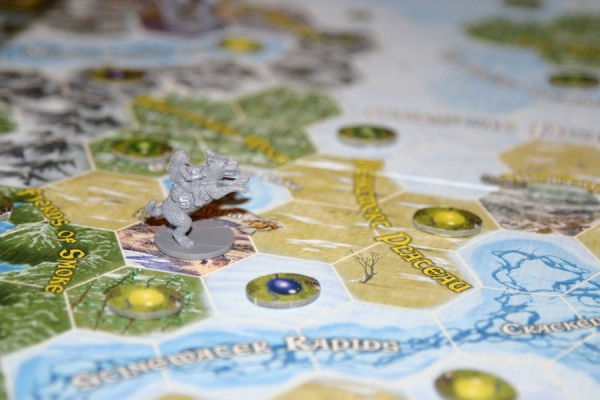
Challenges will also frequently pile on the Frost tokens along with whatever damage they're inflicting. However, like Sands, many of said Challenges have an updated version of "Take this card" called Forage. When you defeat the Challenge, it becomes a useful item. For example, the Stunted Berzerker becomes Forage - White Elixir, which heals your hero and each of your allies of 1 White Death. You can also sell the items for gold equal to their XP value (1 for greens, 2 for yellows, etc.) and they go in the Market stack like usual, whereupon others can buy them for twice their XP value (Retail!) Also, as regular Runebounders will know, Swamps are the least common of terrain symbols on the dice. If the higher-level stuff is taking place in the Wastes spaces, travel is going to be slow. Fortunately, several yellow and blue Challenges have Forage items that let you use other terrain symbols as Wastes to move around a bit more easily. As mentioned, Survival Gear continues in the Wastes, with Flare Crystals, Luckstones, and Snowshoes available in the towns to assist your treks into the cold. Many of these are dropped by lower level Challenges, as well.
And, like Sands, there are Legendary things to help out. Finding them doesn't involve questing as much as it does trekking around and running into Challenges. It's an unusual terrain-based system where you collect Rumor tokens. If you can match enough Rumor tokens to equal the level of the Legendary item/ally you're trying to find and match the surrounding terrain of the hex that you're standing in, you discover said thing/person locked in the ice or permafrost or whatever. It's kind of a minigame within the game in that you're hoping to find Challenges with the Rumor symbol and draw the right collection of tokens and/or find the right spot on the board that matches the tokens you have. The same system is used to draw Clue cards for Princess Taira (any Challenge that doesn't have a Rumor symbol has the Clue symbol; some have both), although in her case you always have to have at least six cards in order to solve the puzzle and locate her. Although it sounds like "luck of the draw" for both of these which often leads to frustration, there are enough multi-terrain and wild tokens and cards in both situations that it shouldn't be endlessly irritating to get where you need to go. In the case of the Princess, it's usually about facing enough blue/red Challenges to draw enough cards in the first place and then, of course, getting to the piece of terrain that matches your pattern.
And that's kind of the defining difference between Wastes and Sands. In the latter, you're trying to tell a story (or even four of them.) In the former, you're solving puzzles. The most basic is the puzzle of your survival, but then there's also the one of finding stuff to help you that doesn't involve paying gold for it, as well as finding one of the win conditions of the game. With that switch, it often felt to me that Wastes was somewhat less engaging and, in some ways, even less so than Island of Dread. In Dread, you were also often telling a story as the Events raised land from the sea or drowned whole cities. In Wastes, the Events just tend to make the weather worse and hit you with more Frost and get rid of your active Flare Crystals. Instead of changing the overall atmosphere, they just ramp it up. In that respect, the immersion is somewhat less. They also didn't continue the Trait system from Sands that was another aspect of that immersion, although the Forage system is a decent replacement, since many of the Forage items directly relate to protecting you from the Frost that is the precursor to what really inhibits you (the White Death.) I think the terrain system for the Legendary items and Taira was a solid attempt at representing the "trackless vastness" that is how we understand arctic environs in our own world and using the old "spacecraft crashed in fantasy world" trope was kind of cool, too (Think original Final Fantasy (Nintendo gray box!) or Expedition to the Barrier Peaks.) There's even a nod to Syndrome's super robot from The Incredibles (Ancient Enforcer.) I enjoy Wastes. It simply doesn't send you on quite the journey that Sands does.

Mists of Zanaga: Mists is the last and the most elaborate of the large expansions for Runebound. Released five years after the 2nd Edition update, it also carried some design developments that probably emerged from constant playtesting and conversations on BGG. For example, in Mists, you can choose to rest after rolling Movement dice. Don't get anything you want? Sit still and dump that Exhaustion. Also, it carried over the additional identity rules for the city/town spaces from Wastes. If your particular municipality is a Native Village, you can keep moving with the rest of your dice even after your Market step. Similarly to the Weik trading posts, the Trading Outposts in Mists not only have larger Market stacks, but now they also allow you to directly trade items with the locals. You can just hand over one of your items and acquire another one that has a lower gold cost. No more exchange rate worries if you have something that costs 5 and want something that costs 4. Before, you'd get only 3 coins for selling your item. Now you can just trade it, straight up.
But the real draw of Mists is the unusual end goal. The main enemy is Tarakhe, an elder god who has been seen in another form as Assif Shib-Sa in Torue Albes. But here he's more powerful and the mahkim (serpent people; no City of Brass, though) think that the only way to defeat him is to awaken another god; a Primal God. However, that also means that said Primal God, when unleashed, will rampage across the land directly, so it will have to be defeated by our heroes (It's also a bit disconcerting when you discover that one of these primal gods is... Tarakhe?) These things are a lot more simple back in Base Game Land. The key to awakening this mercenary god is the Ritual system. Every time a Challenge is drawn, a Ritual token is placed on it (3 suits: Sun, Moon, Skull (and wild.)) When that Challenge is defeated, the token goes on the matching space on the rituals at the top of the board. When a ritual is filled, it takes effect, kind of like Events in the base game. When three rituals have been completed, one of the Primal Gods awakens. Every time a ritual is completed after that, it potentially activates the god's Omen effect (again, game-wide, like Events.) When someone finally decides they've had enough of the would-be savior, they can challenge the Primal God from the Lost City (a disappearing/reappearing city like those in Sands) and have the final showdown. Victory means winning the game.
On the one hand, it's a final boss thing, unlike Sands and half of Wastes, but like Dread and the base game. OTOH, with 10 different Primal Gods, successive games shouldn't lack for variety; on top of the healthy number of rituals that come with the expansion in the first place. Sometimes completing them just refills Adventure counters and places the Lost City. Other times, you may be forced to get rid of your Allies or take wounds (Seeds of Dissension) or you may spend extra Movement dice to rest (Boiling Blood.) However, many of the later rituals can be fairly positive for the players, like hopping directly from any one red jewel to any other red jewel (Ancient Rune Gates), so it's not quite like working against the running clock that is the Frost/White Death combo from Wastes. There are no terrain-based impediments in Mists and the Movement dice return to being exactly what it says on the tin (Plains means Plains, Mountains means Mountains, etc.) But you do have to contend with Roaming Monsters, in that ending your movement outside a town and not having an Adventure step might confront you with a Roaming Monster, which are Challenges whose terrain symbols match whatever you're standing in. So, there is something to consider when moving about, but it's not nearly as trying as the heat of Sands or the cold of Wastes. You also don't receive XP for defeating things from the Roaming track. But many of the cards do award experience without a counter, so if you beat them regularly, you often tend to receive twice the XP that you'd normally get (i.e. 2 for green, 4 for yellow, etc.) Survival Gear does continue in Mists, as well, with Lockjaw Traps, Dead Man's Compasses, and Shaman Bones helping you to deal with movement issues and Challenges.

Also, the Omen ability for the awakened gods can be extremely deleterious, which might explain some of the acceleration elements in Mists that enable players to both contend with those powers and get to the point where they can force the showdown with the active god more quickly. Moakileki the Destroyer, for example, collects Doom counters when Moon or Skull rituals are completed. If he ever has 8 Doom counters, everyone loses and the game is over. Plus, those counters enhance his stats for the final fight. Ravin the Ravenous (Names, people...) places Doom counters on town spaces, which cause wounds to nearby players during Sun rituals and makes said towns discard their Market stacks in Moon rituals. And he gets more life for each town that has a counter. So, the going can get a lot rougher, depending on which god happens to be in play and how quickly rituals (which, again, can often be either mundane or positive for players in the higher (blue and red) decks) are completed.
I think the central design approach of Mists was to increase the speed of the game, even with the extra mechanics of the rituals involved. This may have been a reaction to the generally slower pace of Sands and Wastes or it may have been a reaction to the opinions of Runebound players over the years. Many people have decried the amount of "down time" when other players are taking their turn and/or are involved in a lengthy fight. My reaction to that is the same as ever: I'm playing games with other people to enjoy the game with them and their turns are almost as interesting to me as mine, so I usually have no trouble paying attention. Plus, if they reveal something good in a Market stack, I want to know about it right away... From an artistic standpoint, you could begin to tell the age of the Terrinoth system, overall, as Mists is filled with art assets from other Runebound games and/or Descent. The Legendary item, Steeltooth Trap, from Frozen Wastes is a regular piece of Survival Gear in Mists, for example. It was pretty clear that they were reaching the end of a design cycle. One upside is that some of the heroes included with Mists, such as Annen the Trailblazer, Maliki the Claw, and Saka and Kuto, are among my favorites. I think Mists was a good way to close out said cycle, exploring yet another type of terrain and setting and a broadly different mechanic for the endgame, despite it being essentially another boss fight. As with Wastes, I don't think it quite reached the level to which Sands raised the game.
Overall, I think the large expansions are my favorite part of the whole Runebound system. The transformation of the atmosphere in all four of them is well done, greater aspects of the story are interwoven (similar to The Cataclysm from the small expansions), and yet it still remains recognizably Runebound. I still appreciate the system, even this many years later with the clear design advancements that have occurred throughout the industry, and I don't think I'll ever part with my collection. Even now I'm plotting how I can convince a few members of the local gathering to spend a few weeks, post-plague, playing 11 games of Runebound with me (1 base and 1 with each expansion.) It will be a difficult quest, but I think I'm up to it.
 Games
Games How to resolve AdBlock issue?
How to resolve AdBlock issue? 